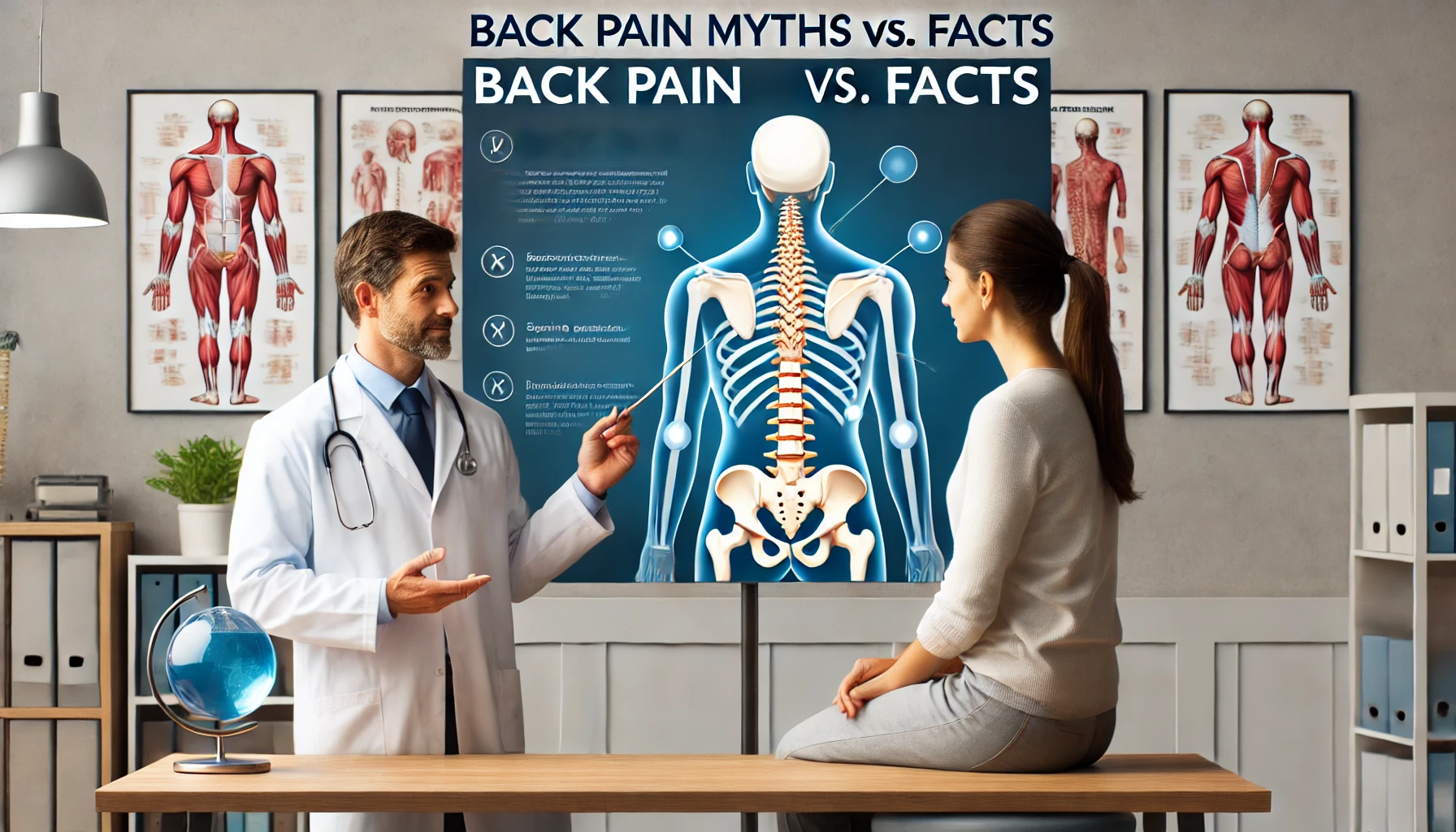Back Pain Myths vs. Facts: What Patients Need to Know

Written by Dr Sushpa Das
Introduction:
Back pain is one of the most common health complaints, affecting millions worldwide. But despite its prevalence, back pain myths continue to spread, leading to unnecessary fear and ineffective treatments. Let’s break down the biggest myths and reveal the real facts you need to know.
Back Pain Myth #1: Rest Is the Best Cure for Back Pain
Fact: Movement Helps Recovery
While lying in bed may seem like the best way to relieve back pain, prolonged rest can actually make things worse. Studies show that gentle movement and stretching help improve blood flow, reduce stiffness, and speed up recovery. Light activities like walking, swimming, or yoga can be more beneficial than complete bed rest.
👉 Tip: If you experience back pain, stay as active as possible within your comfort level.
Back Pain Myth #2: Only Older People Get Back Pain
Fact: Back Pain Affects All Ages
Although back pain is more common in older adults due to age-related changes, young adults and even teenagers can experience it. Poor posture, excessive screen time, sports injuries, and sedentary lifestyles contribute to back pain at any age.
👉 Tip: Maintain good posture and strengthen your core muscles to support your spine.
Back Pain Myth #3: A Firm Mattress Is Best for Back Pain
Fact: Medium-Firm Mattresses Offer Better Support
While many believe that a rock-hard mattress is the best choice for back pain, research suggests that a medium-firm mattress provides better spinal alignment and comfort. A mattress that is too firm can create pressure points, while one that is too soft may not provide enough support.
👉 Tip: Choose a mattress that keeps your spine neutral and supports your natural curves.
Back Pain Myth #4: Back Pain Always Means a Serious Condition
Fact: Most Back Pain Is Temporary and Not Severe
Serious spinal conditions like herniated discs, fractures, or infections are rare causes of back pain. Most cases are due to muscle strain, poor posture, or stress and improve with proper care. However, if your pain is severe, lasts longer than six weeks, or comes with other symptoms like numbness or weakness, consult a doctor.
👉 Tip: Don’t panic if you experience back pain—it’s often manageable with lifestyle changes.
Back Pain Myth #5: Cracking Your Back Causes Arthritis
Fact: Cracking Your Back Is Generally Harmless
The “cracking” sound you hear when stretching or adjusting your back is caused by gas bubbles in the joints. There is no evidence that this leads to arthritis. However, excessive or forceful cracking could strain your joints over time.
👉 Tip: If you feel frequent stiffness, try gentle stretching or consult a chiropractor for safe adjustments.
Back Pain Myth #6: Heavy Lifting Always Causes Back Pain
Fact: Lifting Incorrectly, Not the Weight Itself, Causes Injury
Lifting heavy objects does not automatically lead to back pain—poor lifting technique does. Using your back instead of your legs, twisting while lifting, or not engaging your core can strain your spine.
👉 Tip: Use proper lifting techniques: keep your back straight, bend your knees, and lift with your legs.
Back Pain Myth #7: Back Pain Can’t Be Prevented
Fact: A Healthy Lifestyle Reduces Your Risk
While some factors like aging and genetics are beyond our control, many lifestyle choices help prevent back pain. Regular exercise, maintaining a healthy weight, practicing good posture, and staying active all contribute to a healthy spine.
👉 Tip: Strengthen your core, stay active, and take breaks from prolonged sitting to prevent back pain.
Conclusion
Don’t let myths about back pain keep you from making informed decisions about your health. Understanding the facts helps you take the right steps toward prevention and treatment. If you experience persistent or severe pain, consult a doctor for proper diagnosis and management.
For more expert insights on pain management, visit Daradia Pain Clinic.

